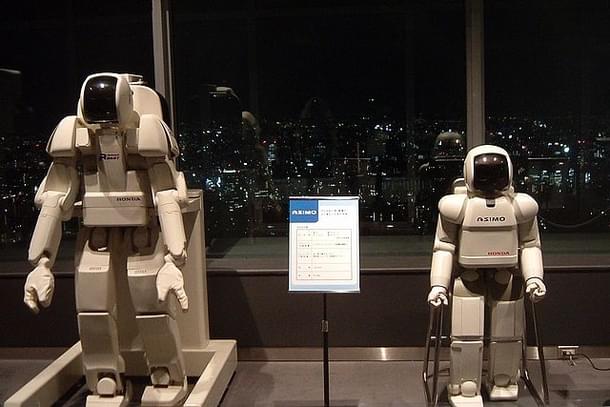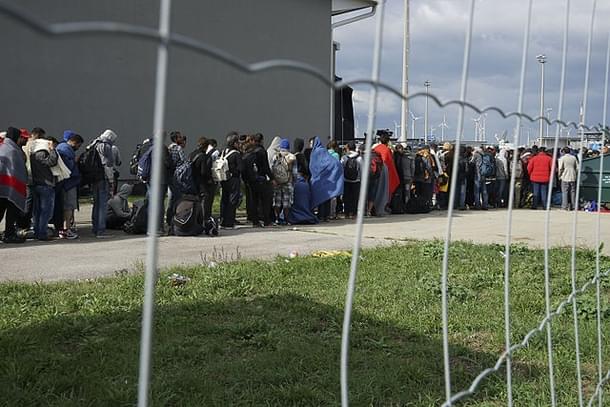Books
How The New Age Of Machines May Affect The Fabric Of Human Society?
Subhash Kak
Jan 09, 2016, 01:36 PM | Updated Feb 12, 2016, 05:29 PM IST
Save & read from anywhere!
Bookmark stories for easy access on any device or the Swarajya app.


As we enter a new machine age are we aware of the processes that have been set in motion and the unintended consequences of the new technologies?
We are entering a new machine age. Robotics, artificial intelligence, and information technology are bringing about unprecedented changes in society. Many jobs are gone forever. As economies adjust, the new jobs being created are either too specialized, where not many workers are needed, or low-paying jobs in the service sector.

Experimental self-driven cars are already on the road. Agriculture and animal husbandry have become industrialized in the developed nations, and robots are replacing workers in the assembly lines. As the share of manufacturing and production in the economy becomes progressively smaller at the expense of services and entertainment, even the education sector is being affected. Will there be other unintended consequences of the new technologies?
To see this, consider the Industrial Revolution that marked the first age of machines. The invention of the sewing machines, steam power, and iron mills took the drudgery out of many tasks that had been done manually for thousands of years.
One of the machines that changed the world was the cotton gin for the separation of cotton balls from the seeds. Although a painting in Ajanta (fifth century) shows a single roller gin, which later gave way to double rollers, the modern cotton gin machine was invented by Eli Whitney in the United States in 1793. Made of wood, the machine used metal hooks attached on the side of panels to remove the seeds. With this machine the efficiency of the seed separation process increased fifty-fold.
But the invention of this machine had the unintended consequence of growth of slavery. The cotton farmers needed more workers to pick cotton. As cotton growing became extremely profitable, the demand for land and slave labor increased. Before the invention there were six slave states; by 1846, there were fifteen. Historians believe that this machine was one of the indirect causes of the American Civil War.
What are the processes that have been set in motion by the new machine age? Since China became the world’s manufacturing hub, many traditional crafts have disappeared, and even the images used in Indian temples are imported from China. Agriculture in high-cost farming regions cannot compete with imports from the mechanized farms in the US, which receive much state subsidy.
Countries are adjusting to the loss of jobs by emphasizing tourism, the crafts, and internal infrastructure development. But conservative societies with cultural biases against tourism, and small agriculture sector, are finding it hard to make this adjustment. This is particularly true of countries in northern Africa and the Middle East, and their unprecedented unemployment is a driver for migration to Europe, America, and Australia.
There is also loss of middle class jobs in developed countries but these economies have dealt with this by instituting generous unemployment benefits. Ironically, these benefits are serving as the positive pull for migrants from poor countries.
Another factor in the mix is the demographic collapse in the developed world. Pressures of work and changes in lifestyle have depressed the birth rate to not much more than 1.2 when replacement requires about 2.1.
Thus, the German population is expected to fall from 81 million to 67 million by 2060 in spite of continuing immigration. By that time many small towns across the country will become depopulated. Likewise, in Portugal, the population is expected to drop from the current 10.5 million to 6.3 million by 2060.

European nations are admitting millions of migrants to mitigate their own population decline. But it comes with a big unknown for the future since the immigrants have generally not assimilated. Culturally, the free-wheeling West is the antithesis to Islam.
Meanwhile, the emergence of Islamic State as the new Caliphate has complicated the picture further. A consequence of the destabilization of the region by the Iraq War, and the unresolved schisms within Islam, it has a tremendous hold on the imagination of the disaffected Muslim youth worldwide. Will the conflict between the Islamic State and the West go on for years and will societies have to adjust to random acts of terror?
The welfare state of the West cannot last forever; indeed, most of the European nations are bankrupt. When the welfare benefits to the unemployed end, what will that do to social harmony?
History repeats itself, but each time it does with a new twist. Consider the economic reasons behind Rome’s decline which was caused by a similar mix of drive for increased efficiency, immigration, and unemployment. In late Roman Empire big farms, called latifundia, used the best technology of the day to cut cost of production. Slaves from far flung colonies of the Empire were brought in to work on the estates, which kept on getting consolidated into ever-larger sizes.
As more slaves came in, wages became depressed and unemployment among the citizens increased. Rome responded by instituting the dole, consisting of pork, oil and bread, for the unemployed, and subsidies to farmers. With time, the Empire’s finances became overstretched and the army became dependent on foreign recruits and mercenaries. Inflation increased, the provinces rose in revolt, and, as always, barbarians were knocking at the gate. It was in this vacuum that religion stepped in and took Europe into the Dark Ages.
It is uncanny how similar recent developments in EU and the US have been in response to the pressures of globalization. Like the owners of the latifundia in Rome, the tech titans want ever larger immigration quotas for programmers.
The new age appears to conform to the dark vision of Aldous Huxley in his Brave New World. Huxley saw the Alphas, with the assistance of the Betas, running the World State, with the menial tasks left to the Gammas, the Deltas, and the Epsilons, who were dulled by drugs and recreational sex. He saw a general mockery of marriage, parenthood, and pregnancy.

The philosophical basis of the new machine age is neoliberal economics, in which the marketplace decides everything, that has caused a great gulf to emerge between the super-rich and the general population. It is not uncommon in the US to see a person in finance or entertainment make dozens of millions of dollars a year when the worker in the restaurant makes $20,000; In India the disparity is even more acute.
Indian social theorists, in the dharmaśāstras, foresaw the problem of disparity which is why they exalted the idea of renunciation. To them the pursuit of happiness was a subtle dance between enjoyment and sacrifice.
What will happen to social fabric as fewer and fewer people are needed to work farms and factories? It is fear of this future, and pressures of work if they hold a job and despair if they are unemployed, that is making more and more people to choose not to have children.
Virtual reality, new drugs, movies and TV shows, and social media provide pursuits that can keep a person busy the entire day, even if unemployed and socially isolated. The cult of individualism has degenerated into Narcissism and a cult of the body.
Information is central to modern business and politics. The media, as arbiter of what is good information, has allied itself with powerful political and corporate groups. In a fully networked society, the State needs increased control over the lives of people and propaganda is one of the tools used for this control.
Subhash Kak is Regents professor of electrical and computer engineering at Oklahoma State University and a vedic scholar.





